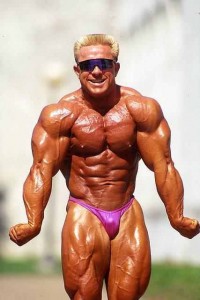Many people who embark on a fitness program think the same way a drill sergeant does on the day he welcomes his trainees – soreness and difficulty in moving after a session is good. However, in the absence of adequate rest in the form of sleeping early, good meals and the intense camaraderie that brings trainees through basic training, soreness is not a good measure of how good your previous workout was. Here is an article on the benefits of exercising with a group.
Muscle soreness is not only caused by damage done to the muscles during training, but also by the overuse of the central nervous system – which takes a bit more time to recover than the muscle itself. Burning out your CNS is a sure way not only to have less and less productive workouts, but also to instill bad form and increase the risk for injury down the road.
A little soreness is good, however, it means you did enough work to make your muscles notice and thus adapt to the stresses involved with training. But too much of it could mean you are exerting too much effort and not giving your body the time it needs to recover.
Doing this over a long period of time could cause more harm than good and actually make you lose muscle and strength.
So, how do you know that you’ve put in a good workout?
It’s simple, kind of. Different goals dictate different methods. For instance, bodybuilders who are concerned about hypertrophy highly value the pump (plasma trapped between the cells of muscle tissue) they feel after a workout, while power-lifters who are concerned about strength, find value in leaving some energy in the tank to work up towards a new personal record.
To help ensure you continue to make progress you must change the intensity of your workouts. This can be done in a few different ways. You can increase the weight, increase the amount of reps performed, or simply limit the rest time between exercises. All of these will put more stress on your body (which is good to a point) and allow your body to adapt accordingly. The more “controlled stress” you put on your body the more it will adapt to prepare for the next time you decided to “do work!” in the gym and thus, providing noticeable results more quickly. To be able to do this, you must be keeping track of your workouts meticulously. This method is really for those who are willing to put in more time into their fitness goals by planning their training and monitoring their results.
For those who prefer to workout depending on how their body feels, an effective method is to observe how you feel after the workout. Do you feel faster, stronger, or nearly invincible after your workout? Then it was good. But if you feel tired, worn out, or like you just want to lie in bed and rest, you might have had a little too much. You don’t need to spend hours in the gym to get results, you just need to work hard while you are there. A good rule of thumb is to keep your workouts short and intense.
Trying to be part of the “train ’til you drop” crowd will not give you the results you want. Ultimately, you’ll feel like you’re doing great at first, but eventually your body will slam on the brakes and you will become sore and stiff, and basic tasks like walking down stairs will quickly become the worst part of your day. Don’t get me wrong, everyone has been sore after a hard leg-day but it’s not good be like that all the time. If you had a good workout, you can stretch, which can actually help you recover faster for the next session.











